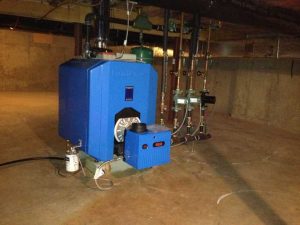Easy Measures for Reducing Home Heating Bills
By Mark J. Donovan
|
|
With the approach of winter it is time to begin to think about home heating. I guarantee you the home heating oil and gas companies already have. No doubt they have price hikes already penciled in on their calendars and are just waiting for the first cold snap or snow storm to announce their price increases and their excuses on why there will be limited home heating fuel supplies this winter.
The first step you can take to minimizing your winter home heating costs is to make sure your home heating system has been cleaned and maintained for maximum efficiency. |
Over a year’s time air and fuel filters can become dirty, jets can become clogged, circulating pumps can become weak or fail, and thermostat settings can drift. Anyone of these types of problems can impact your home heating systems efficiency level and in some cases prevent it from working in entirety.
There are some specifically designed and manufactured plastic sheet products for windows that do an excellent job of preventing air infiltration.
Third, caulk around all doors and windows on the exterior of the home. Also check the doors and windows for air leaks. Where there are air leaks, apply weather stripping. Also place a folded towel or cloth snake up against exterior doorway openings.
| Fourth, check the exterior foundation of your home for cracks. Foundation cracks not only make your home susceptible to water infiltration but also cold air. Fill the cracks with a foundation crack sealer. In addition, you may also want to consider installing plastic against the foundation walls.
Fifth, install programmable thermostats in each heating zone of your home. Program the thermostats for cooler temperatures at night, and while you are away from the home during the day. Also program the thermostats for 66-68o temperature settings when you are home, and wear a sweater or sweatshirt. |
 |
Sixth, minimize the use of your bathroom and kitchen ventilation fans. Not only do they draw moisture out of the home, but also a significant amount of heat.
Seventh, do not heat underutilized rooms or levels of the home. Close the heating registers or lower the thermostat settings in these rooms or levels if you can. Alternatively, use a space heater in these rooms when you infrequently use them.
Eighth, make sure your hot water heater is not turned up too high, and that it and/or the hot water storage tank are wrapped in an insulation blanket.
Ninth, use drapes, blinds and curtains intelligently. Open them up on southing facing sides of the home, or when the sun is directly shining into them, and close them when it is not.
Finally, shorten your shower times. Long drawn out showers consume a great deal of hot water and home heating fuel. Work at cutting your shower time in half. By shortening your shower time you can also reduce the amount of time the bathroom ventilation fan needs to be operating.
By implementing these energy saving tips you should be able to dramatically save on winter home heating costs as well as help the environment. And maybe the most important benefit put less money in the hands of oil and gas companies.
For information on Restoring Baseboard Heating Element Covers, see the Restoring Baseboard Heating Element Covers eBook from HomeAdditionPlus.com. The Restoring Baseboard Heating Element Covers Ebook provides easy to understand, step-by-step instructions, on how to restore Baseboard Heating Element Covers so that they look new again. Pictures are included for every key step in the process.
For information on how to maximize a wood stove’s heating efficiency, see HomeAdditionPlus.com’s Installation of Hood over Wood Stove eBook.
Related Information
- How to Save Money on Energy Utility Bills
- How to Ensure a Warmer Home this Winter
- Save on Winter Home Heating Bills with these Tips
Additional Heating and Cooling Resources from Amazon.com
 |
 |
Free Heating and Cooling Price Quotes with No Obligation!
Fill out our 3-5 minute quick and easy form, and receive a free price quote on heating & cooling from one of our pre-screened and licensed HVAC contractors. This process is free and there is no obligation to continue once you receive your heating & cooling price estimate.

